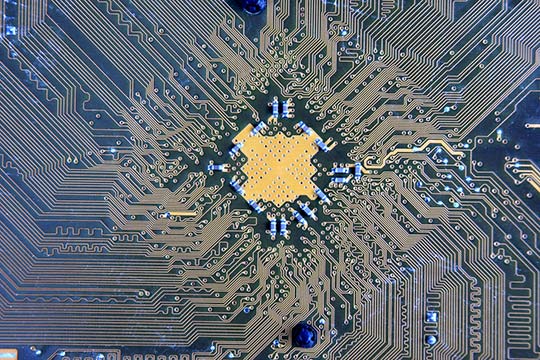TECHNOLOGY FOCUS
Conventional tools for analyzing and extracting the feature content of signals are filters (time content), Fourier transforms (frequency content) and beamforming (spatial content).
Alternative tools to these conventional techniques are able to produce signal analysis results with finer temporal detail and higher spectral and spatial resolution.
This course goes beyond available textbooks and extends these signal analysis tools to higher dimensions and multiple sensor channels.


COURSE CONTENT
This course introduces practical implementation of the latest research approaches to time series and spectral analysis.
The course uses a systematic approach based on a signal modelling theme, while focusing on fast computational procedures that make the alternative higher performance analysis techniques feasible to implement in practical applications.
Of special focus are the extensions of fast computational algorithms for high performance signal analysis techniques to multichannel, multi-dimensional, and non-stationary instantaneous time-frequency analysis applications, where there is little published implementation literature.
WHO SHOULD ATTEND
The expected background for students is some fundamental knowledge of Fourier transforms, basic digital signal processing (filters, convolution, Fast Fourier Transform [FFT]), basic matrix mathematical operations (matrix inverse, eigenvectors), and introductory random signals (correlation, spectral density).
Some experience applying time and frequency domain techniques to signals would be helpful.

The daily schedule will be presented before the course start. The main topics will include:
Signal Analysis Tools and Classical Spectral Analysis
Relevant concepts of traditional temporal and frequency domain analysis of signals. We will establish some important concepts for the advanced alternative temporal and frequency (spectral) techniques
- Complex Signal Representations, Analytic Signals
- Issues in Spectral Estimation
- Tutorial Review: Fourier Transform Theory
- Tutorial Review: Random Signal Theory
- Tutorial Review: Matrix Algebra Theory
- Resolution and Time-Bandwidth Uncertainty Principle
- Autocorrelation and Cross Correlation
- Power Spectral Density
- Window Selection
- Periodogram Method
- Blackman-Tukey Method
Parametric and Autoregressive Methods
Many real-life applications are based on autoregressive and linear prediction modelling and estimation. We explore the basis for the high accuracy via a systematic modelling viewpoint, and illustrate the performance with actual data.
- Parametric Time Series Models: Autoregressive (AR)
- Moving Average (MA), and Autoregressive Moving Average (ARMA)
- Parametric Relationships
- Autocorrelation Relationships among Parametric Models (AR)
- Linear Prediction
- Levinson-Durbin Algorithm
- Maximum Entropy Analysis
- Spectral Estimation
- Order Selection
Exponential Frequency Estimation and Minimum Variance Spectra
Performance for finding signal feature extraction is achieved using minimum variance and eigenanalysis approaches, at a computational cost increase. We explore the tradeoffs.
- Prony's Method
- Damped Exponential Parameter Estimation
- Relationship to AR Methods
- Least Squares Prony Algorithms
- Noise Excision by Eigenanalysis/Principal Components Analysis
- Minimum Variance Estimation
- Pisarenko's Technique
- MUSIC and ESPRIT Algorithms
- Estimation of Number of Components
Multi-Channel and Two-Dimensional Spectral Analysis
Some of the techniques are revisited in the form of a multi-channel configuration, being representative of important applications such as array processing or the use of multiple sensors.
- Multi-Channel (MC) Spectral Analysis
- MC Classical Spectral Estimators
- Minimum Variance Spectral Analysis
- Minimum Variance Spectral Algorithm
- Autoregressive and Linear Prediction
- Relationship of Temporal and Spatial Spectral Analysis Techniques
- Spatial and Temporal Reference Beamforming
- Super-Resolution Direction Finding
Time-Frequency Analysis (TFA)
Performance tradeoffs and issues concerning time-varying signal analysis will be summarized
- Cyclostationarity,
- Time-Recursive AR Estimation,
- Short Time Fourier Transform,
- Linear and Quadratic Time-Frequency Representations,
- Short Time Fourier Transform (STFT),
- Wigner-Ville Distribution,
- 2D Methods of TFA,
- Ambiguity Functions in TFAs

